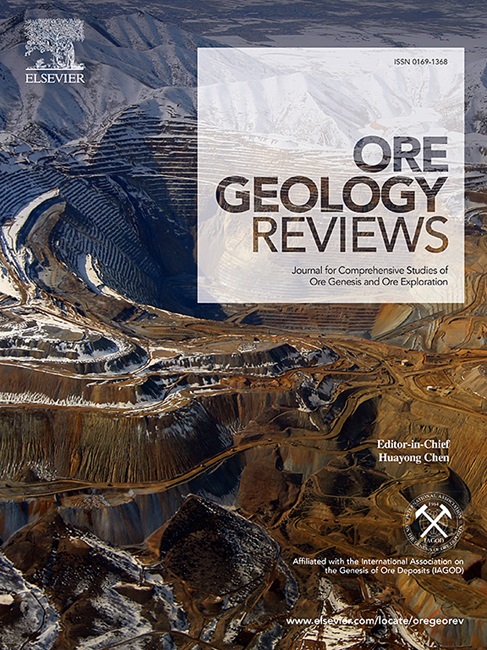Paleomagnetic dating and geological significance of the Uragen Zn–Pb deposit, Xinjiang, NW China
IF 3.2
2区 地球科学
Q1 GEOLOGY
引用次数: 0
Abstract
The Uragen Zn–Pb deposit, situated in the northwestern margin of Xinjiang’s Tarim Basin, China, resides within a geological setting shaped by a myriad tectonic movements since the Mesozoic era. This complex history has complicated the depositional environment of the Uragen Zn–Pb deposit, fueling ongoing debate surrounding its mineralization mechanisms and age. Consequently, an in–depth investigation into rock magnetism and paleomagnetism has become imperative. This study collected over four hundred samples from 23 distinct sites for magnetic analysis. Rock magnetism experiments identified magnetite and hematite as the primary carriers of magnetization. Paleomagnetic analysis, employing thermal and alternating demagnetization techniques, successfully isolated stable characteristic remanent magnetism (CHRM), yielding paleopoles situated at 81.7°N latitude and 131.0°E longitude, with dp = 4.6 and dm = 5.9. The age of the mineralizing event was determined to be 47.5 ± 3.5 Ma. Based on these new data, we suggest that the Uragen Zn–Pb deposit may have formed in response to the collision between the Indian and Eurasian plates, triggering an orogeny within the Tarim Basin. Subsequent activation and migration of fluids in the Kashi Sag, coupled with thermal or hydro–chemical interactions between ore–forming fluids in the Lower Cretaceous Kezilesu Group and protoliths, culminated in the deposition of mineralization, giving rise to the observed ore deposit.

求助全文
约1分钟内获得全文
求助全文
来源期刊

Ore Geology Reviews
地学-地质学
CiteScore
6.50
自引率
27.30%
发文量
546
审稿时长
22.9 weeks
期刊介绍:
Ore Geology Reviews aims to familiarize all earth scientists with recent advances in a number of interconnected disciplines related to the study of, and search for, ore deposits. The reviews range from brief to longer contributions, but the journal preferentially publishes manuscripts that fill the niche between the commonly shorter journal articles and the comprehensive book coverages, and thus has a special appeal to many authors and readers.
 求助内容:
求助内容: 应助结果提醒方式:
应助结果提醒方式:


